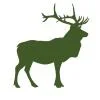
Infographic: Flatirons
They’re Boulder’s icon and hard to miss. On campus you spy them from the paths and the quads, from Folsom Field, classroom windows and almost everyspot with a clear view west. Here’s a primer.

Lowest peak: Fifth, at 6,900 feet
Highest peak: Fourth, at 7,630 feet
What they’re made of: Feldspar-rich sandstone
The rocks are nearly 300 million years old. The Flatirons took their current form 40 million to 68 million years ago
Angle of faces: Most are about 55 degrees
Tradition holds that early Boulder residents noticed their resemblance to clothes irons. Early in the 19th century the Flatirons were also know as the “Chautauqua Slabs” and “The Crags”

In November 1949 CU students Dale Johnson (Geol'54) and Roberts Rowlands (Engr ex'53) climbed the third Flatiron and painted a "C" on it

In 1953, Johnson climbed the third Flatiron on roller skates, using ropes and belays

Local shop owner Gary Neptune climbed the third Flatiron naked in the 1970s

Bill Wright and Stefan Griebel (ElEngr'97; MS'00) of Boulder skied the "1911 Gully" route of the third Flatiron in 2007

In 2010 Griebel speed-climbed the east face of the third Flatiron in 5 minutes 59 seconds

Boulder-native Austin Porzak skied the face of the first Flatiron, March 1, 2015

















